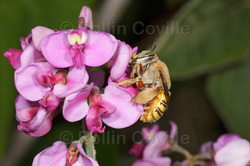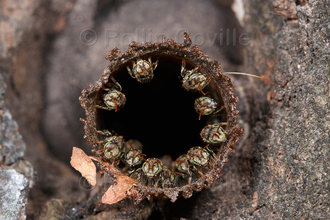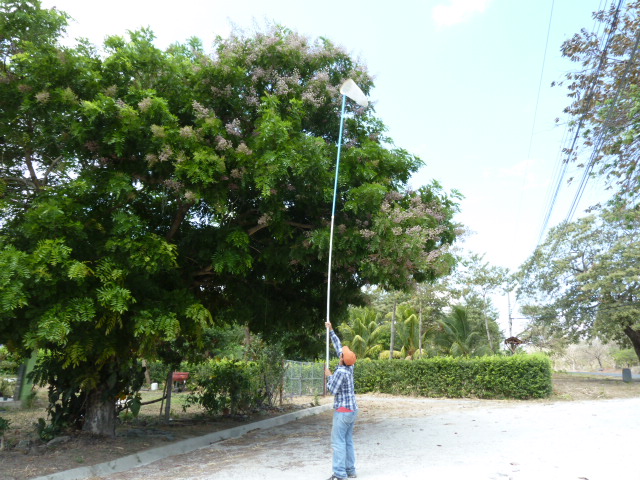The Costa Rica Bee Project

Centris aethyctera visiting Securidaca sylvestris.
For over a decade, we have collected information on native ornamental plants in Cañas, Bagaces and Liberia in the NW Guanacaste Province of Costa Rica and have identified about 100 species that attract native bees, over half of which are native to Guanacaste or Costa Rica. Of these, 30 are present in nearby wildlands. Only limited bee data has been collected to date, however, preliminary findings suggest that comparable numbers of bees are visiting plant species in both urban and wild areas.
This unique composition of plants in the urban ornamental landscape provides an important opportunity to explore the potential of urban habitat gardens to protect and preserve declining native bee populations. Similar studies in the U.S., where over 90% of urban gardens are made up of non-native ornamentals, have documented surprisingly high numbers of visiting native bees in gardens with the right, “bee-attractive” floral resources. This proposal will investigate the capacity of urban NW Costa Rica to serve as a refuge for diverse native bee species, the impacts of using high levels of native plant species in urban gardens, and potential implications for constructed habitats in other tropical and temperate urban areas.

Workers of Nannotrigona perilampoides guarding their nest entrance.
Project findings will result in a list of recommended plants that can be used to construct high quality native bee habitats in urban areas. The list will bolster budding efforts in this rural-urban area of Costa Rica to actively engage local residents in environmental and species conservation. A key long-term goal of the project is to reinforce the concept of species conservation through the construction of quality urban habitats that include larger numbers of native plants. In our view, these urban habitats not only work to protect certain species, but bring the larger conservation message home to local residents, educating and inspiring them to act on behalf of disappearing wild species.

